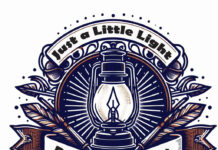While it’s best to break foals to a halter at an early age, many owners wait until fall weaning time.
Halter breaking will often be the first experience for a foal to respect handling and to give to pressure.
Margo Ball of Ball’s Quarter Horses uses old fashion horsemanship in halter breaking foals. She approaches it with patience, an earned trust and the belief that every foal is an individual.
Halter breaking might take one day or three weeks, and Ball might spend more time on with different foals. “It all depends on the personality and needs of each foal,” she said.
It’s important that the halter fits properly, so an adjustable halter available with extra holes is best. A lead rope is required and must be of adequate strength yet not too heavy.
“It’s best to halter the foal in a stall,” Ball said. “The foal should be curious and easy to approach from the left side. Let the foal inspect the halter, then slip the halter on and off the foal’s nose.”
Natural response is to jerk up against foreign pressure on his nose. “So it’s important to get the foal accustomed to handling the nose, face and ears,” Ball said. “The halter going on and coming off gives the foal trust in the halter and encourages acceptance.”
When the foal is comfortable, the halter can be buckled on. “Do not, at any time, leave the foal alone with the halter on,” Ball said. “This might be an invitation for serious injury or even death.”
Working from the foal’s left side, it’s best to take up the slack on the lead. Pressure should be applied on the hip with the hand until the foal moves. “This is the beginning of a turn on the forehand and discourages the foal from turning around in the stall,” Ball said
“If the foal gets frightened and pulls back, apply gentle pressure to keep him from hitting his head,” Ball said. “It’s important not to jerk on the lead during this time because the foal is very sensitive to injury.
“If the foal pulls against the pressure, go with him, and release when he gives to the pressure,” Ball continued. “You will have to develop a very light and sensitive touch.”
Within minutes, the foal understands that giving to the pressure allows a release reward. “Gently ask the horse to come toward you using light, constant pressure,” Ball said.
“Tugging will not teach him to give to pressure. This exercise lays the foundation for successful leading, tying and trailer loading. It’s important to do both sides evenly on all these exercises.”
Stopping and praising the foal after he successfully gives to pressure is very important. “It will teach him to recognize and look for praise,” Ball said. “This positive reinforcement will stay with him forever. It builds trust.”
Restraining the young horse at this early age is invaluable. Done successfully, he will be more inclined to accept restraint as he grows older and larger.
“Block the foal against the chest between his front legs,” Ball explained. “Place one arm around his chest and restrain the foal for a few seconds, softly saying ‘Whoa.’ If he tries to escape your hold, stay with him and praise when he relaxes.”
The foal needs to learn how to have legs picked up “Put your left arm around his back and support under the girth with your left hand,” Ball said. “With your right hand, pick up the foal’s front left hoof and raise it. The foal may feel like falling down and, if so, you can use your left leg for support.”
The goal is to teach the foal that he can balance himself on three legs. “Do not let the foal pull his leg away from you,” Ball said. “When he relaxes, place the hoof back down.”
Back legs should be picked up with similar routine to the front legs. “The natural reaction is to kick and try to escape, but do not allow him to pull his leg away. Keep talking and praising softly.
After the foal gives to pressure in both directions, he can be led in the stall, then outside.
“Start on one side of the foal, open your arms and hold the lead with the hand closest to the foal’s head,” Ball said. “Place your hand closest to his tail on his rump. Give a little tickle or pinch until he begins leading around a 10-15-foot circle.”
Like people, horses are right-handed and left-handed. It might be easier for the foal to lead from one side or the other.
“Regardless, it’s important to teach the foal to lead from both sides,” Ball said. “This will lay the foundation for longe-line training and riding as well as trailer loading.”
CUTLINE
Halter should be adjustable with several holes so it will properly fit a foal during training.





